Ceramics across the globe: Understanding diverse pottery styles
Ceramics have a fascinating way of weaving stories across cultures and time. Each piece of pottery is not just a vessel but a reflection of the people who created it. From the intricate designs of Asian porcelain to the earthy tones of African pottery, the world of ceramics is a vibrant tapestry of history, tradition, and innovation. When you think about it, pottery is like a diary written in clay, capturing the essence of various civilizations. It’s intriguing to consider how a simple bowl or vase can tell us so much about the lives, beliefs, and artistry of different cultures.
As we embark on this journey to explore the diverse pottery styles around the globe, we’ll uncover the cultural significance behind each piece. Pottery is often tied to rituals, daily life, and even economic practices. For instance, in many indigenous cultures, pottery is not merely functional; it carries deep spiritual meanings and is often used in ceremonies. Imagine a beautifully crafted pot used in a wedding ceremony, symbolizing fertility and abundance. This connection between ceramics and culture makes the study of pottery a rich and rewarding endeavor.
Moreover, the techniques and materials used in pottery vary dramatically from region to region. This variation is influenced by local resources, climate, and cultural practices. For example, the use of local clay and natural pigments can lead to distinct styles that are immediately recognizable. As we delve deeper into the world of ceramics, we will see how artisans have perfected their craft, often passing down techniques through generations, creating a lineage of artistry that connects the past to the present.
In this article, we will not only explore historical pottery styles but also examine modern innovations that are reshaping the ceramic landscape. It’s exciting to see how traditional methods are merging with contemporary aesthetics, making pottery a dynamic form of art. So, whether you’re a pottery enthusiast or just curious about the world of ceramics, there’s something here for everyone. Let’s dive in and discover the magic of pottery from around the globe!
- What are the main types of ceramics?
There are several types of ceramics, including earthenware, stoneware, and porcelain, each with unique properties and uses.
- How is pottery made?
Pottery is made by shaping clay and then firing it in a kiln to harden it. The process can vary based on the desired outcome and technique.
- What is the significance of pottery in different cultures?
Pottery often holds cultural significance, representing traditions, rituals, and the daily lives of people in various societies.
- Are there modern techniques used in pottery?
Yes, modern techniques such as 3D printing and digital design are being integrated into traditional pottery practices, creating new possibilities for artists.
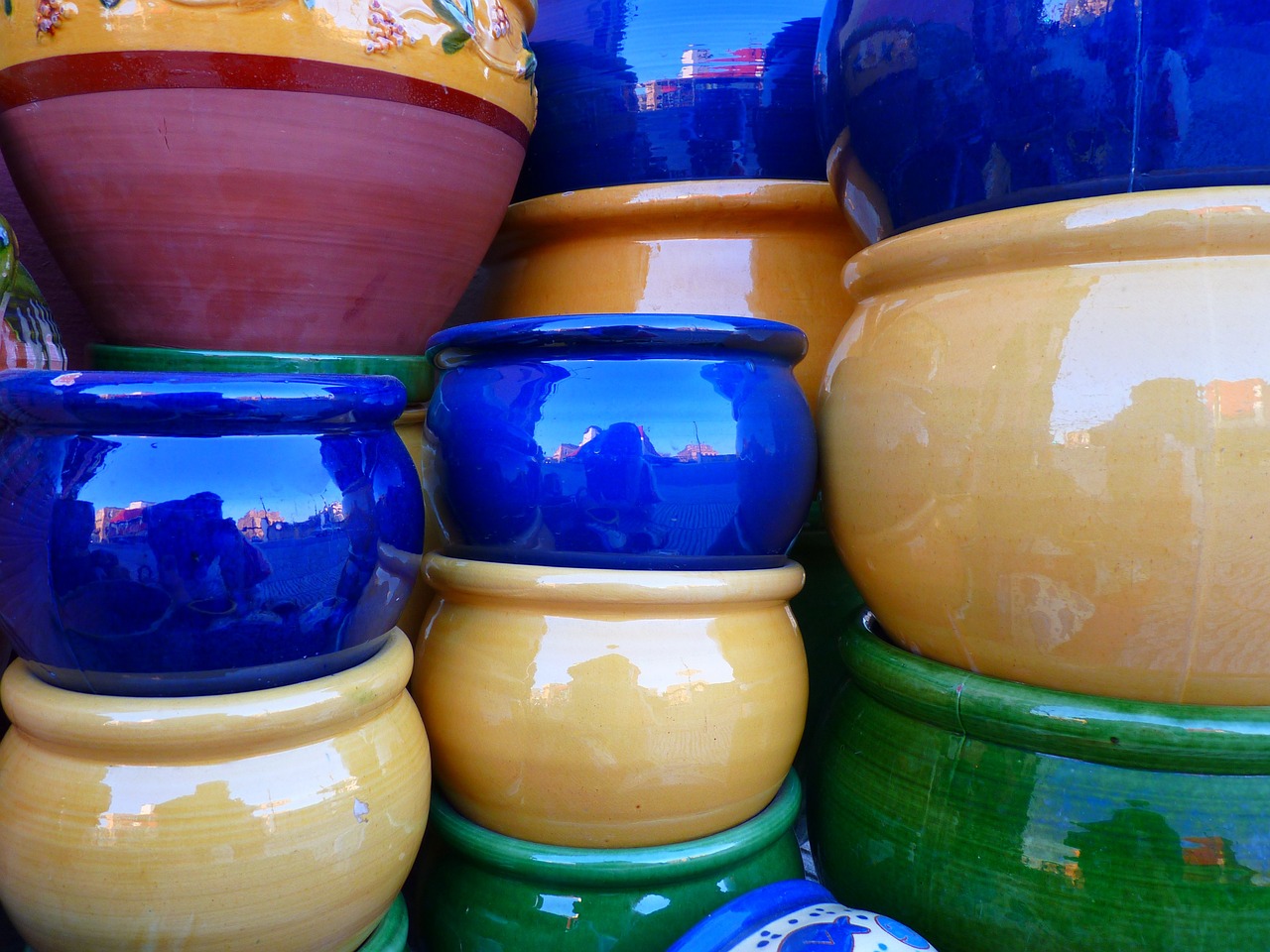
Historical Significance of Ceramics
Ceramics have been an integral part of human civilization for thousands of years, serving not only as functional objects but also as a canvas for artistic expression. From ancient times to the modern era, pottery has played a crucial role in our everyday lives, reflecting the cultures and traditions of societies around the globe. The evolution of ceramics provides a fascinating glimpse into the development of human creativity and technological advancement.
Historically, ceramics were primarily used for practical purposes such as cooking, storage, and transportation of goods. The earliest known pottery dates back to around 29,000 BC, with the discovery of the Venus of Dolní Věstonice in the Czech Republic, a figurine made from clay. This early form of ceramic art highlights the human desire to create and represent the world around them, even in its most basic forms.
As we delve deeper into the history of ceramics, it's essential to recognize that different regions developed their unique styles and techniques based on available resources and cultural influences. For instance, ancient Mesopotamia is credited with the invention of the potter's wheel, which revolutionized pottery production and allowed for more intricate designs. In contrast, the indigenous peoples of the Americas created pottery that reflected their environment and spiritual beliefs, often adorned with symbols and motifs that told stories of their heritage.
Moreover, ceramics have also held significant roles in cultural rituals and practices. In many societies, pottery is not merely an object but a vessel of meaning, often associated with ceremonial uses. For example, in African cultures, pottery is often used in rituals and ceremonies, symbolizing life, death, and rebirth. The unique styles of African pottery, such as the intricate beadwork and vibrant colors, serve as a testament to the rich cultural narratives embedded within these objects.
To illustrate the historical significance of ceramics, consider the following key points:
- Functional Use: Pottery has been essential for storage, cooking, and serving food, making it a cornerstone of daily life.
- Artistic Expression: Ceramics have offered artists a medium to convey cultural stories, spiritual beliefs, and social values.
- Cultural Identity: Different pottery styles often reflect the identity and heritage of a community, showcasing their unique traditions.
- Technological Advancement: The development of techniques such as glazing and firing has evolved over centuries, influencing the art of pottery.
In summary, the historical significance of ceramics extends far beyond their physical presence. They are a testament to human ingenuity, creativity, and the intricate relationship between culture and art. As we explore various pottery styles from around the world, it becomes clear that ceramics are not just artifacts; they are vital links to our past, providing insights into the lives and beliefs of those who came before us.
What is the oldest known pottery?
The oldest known pottery dates back to around 29,000 BC, with the discovery of the Venus of Dolní Věstonice in the Czech Republic.
How has pottery evolved over time?
Pottery has evolved significantly with advancements in technology, such as the invention of the potter's wheel and various firing techniques, allowing for more intricate designs and greater durability.
What cultural significance does pottery hold?
Pottery often reflects the cultural identity of a community, showcasing their traditions, beliefs, and artistic expression, making it an essential part of many rituals and ceremonies.

Regional Pottery Styles
When it comes to pottery, the world is a vibrant tapestry of styles and techniques, each reflecting the unique culture and resources of its region. From the intricate designs of Asian ceramics to the earthy tones of African pottery, these styles tell stories that transcend time and geography. Understanding these is like embarking on a journey through history, where each piece carries the essence of the people who crafted it.
In the heart of Europe, for instance, pottery has evolved over centuries, influenced by various artistic movements and cultural exchanges. The iconic Delftware from the Netherlands, known for its blue and white designs, is a perfect example. This style originated in the 16th century and was inspired by Chinese porcelain. The unique cobalt blue pigment used in Delftware creates stunning visuals that have captivated collectors worldwide. Similarly, the Italian majolica pottery, with its vibrant colors and intricate patterns, showcases the region's rich artistic heritage and its connection to the Renaissance.
Moving to the Americas, indigenous pottery styles reflect a deep connection to the land and its resources. Native American pottery, for instance, often features natural motifs and is made using traditional techniques passed down through generations. The Pueblo pottery of the Southwest is particularly notable for its use of coil-building methods and natural pigments, resulting in functional yet artistic pieces that serve both practical and ceremonial purposes. The rich earth tones and intricate designs tell stories of the community's history and beliefs.
In Asia, the diversity of pottery styles is astonishing. The Japanese have mastered various techniques, each with its own cultural significance. For example, the famous Imari porcelain from Japan is known for its elaborate patterns and vibrant colors, often depicting landscapes and floral designs. Meanwhile, the Chinese have a long-standing tradition of porcelain-making that dates back to the Tang Dynasty. Their ceramics are characterized by delicate craftsmanship and often feature intricate blue and white designs that have influenced pottery globally.
African pottery, on the other hand, is deeply intertwined with cultural rituals and community life. Each region has its distinct styles, often linked to specific tribes or communities. For example, the Zulu people of South Africa create beautifully decorated clay pots that serve both functional and decorative purposes. These pots are often adorned with geometric patterns that hold cultural significance, representing the identity and heritage of the Zulu community. In West Africa, the Yoruba people produce stunning terracotta sculptures that are not only artistic but also serve as offerings in religious ceremonies.
As we explore these diverse pottery styles, it becomes clear that ceramics are more than just functional objects; they are a reflection of the culture, history, and identity of the people who create them. The techniques and materials used in each region tell a story of innovation and adaptation, showcasing the creativity and resourcefulness of artisans throughout history.
In conclusion, the world of pottery is a rich and varied landscape, where each piece holds a narrative waiting to be discovered. By appreciating these regional styles, we not only celebrate the artistry of ceramics but also gain insight into the cultural significance that shapes our global heritage.
- What are the main types of pottery styles? Pottery styles can vary greatly by region, with notable types including Japanese porcelain, African terracotta, and European earthenware.
- How does pottery reflect cultural significance? Pottery often incorporates traditional designs and materials that are meaningful to a community's history, beliefs, and daily life.
- What techniques are commonly used in pottery? Techniques such as coil-building, wheel-throwing, and glazing are commonly used across different pottery styles.
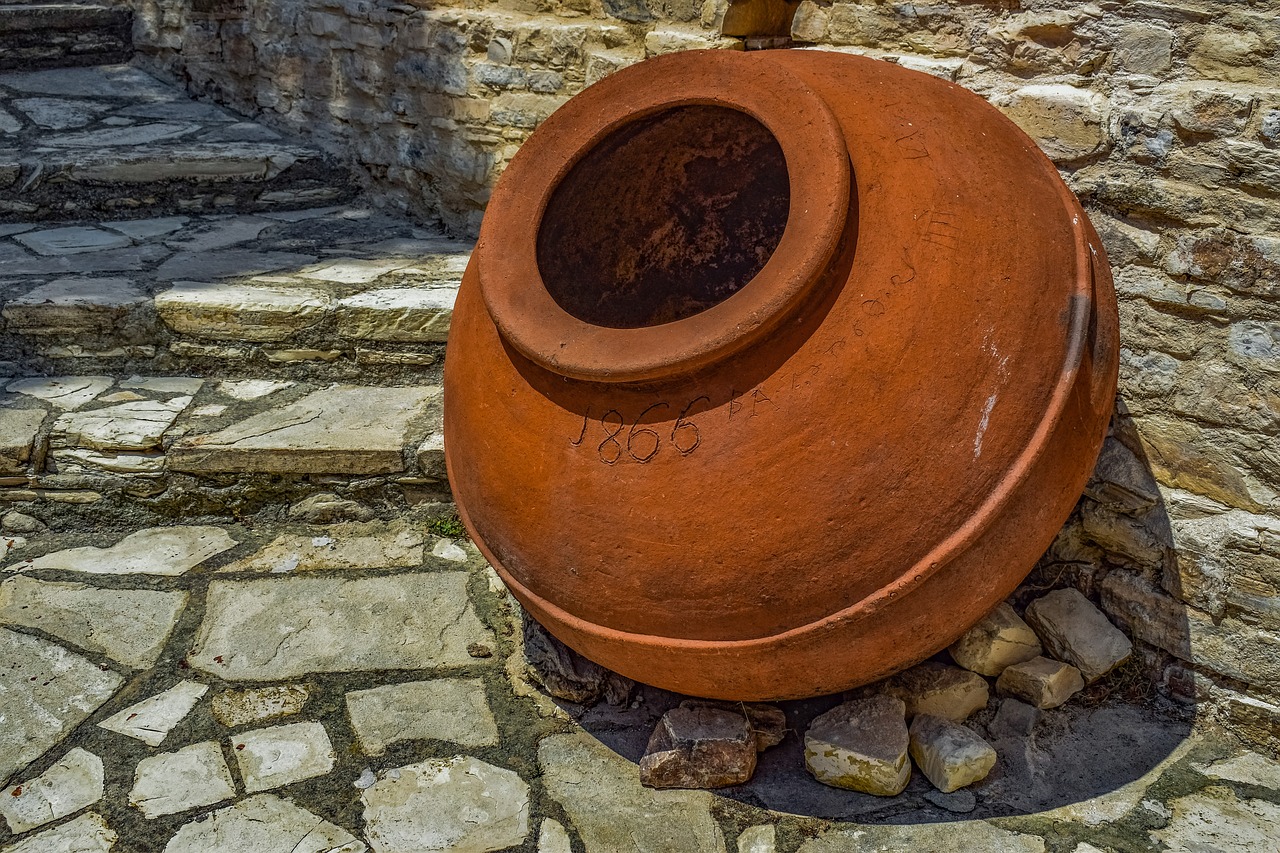
Asian Pottery Techniques
When you think of Asian pottery, what often comes to mind is a mesmerizing blend of tradition, craftsmanship, and artistic expression. The continent is home to a myriad of pottery styles, each with its own unique techniques and cultural significance. From the delicate beauty of Chinese porcelain to the rustic charm of Japanese Raku, Asian ceramics encapsulate a rich heritage that has evolved over centuries.
One of the most celebrated techniques in Asian pottery is the creation of Chinese porcelain. Known for its translucence and strength, this type of pottery has a fascinating history that dates back to the Tang Dynasty (618-907 AD). The process involves a high-temperature firing that transforms clay into a vitreous, glass-like material. The intricate designs often feature elaborate motifs inspired by nature, mythology, and daily life, showcasing the skill and artistry of the potters. The use of cobalt blue underglaze, particularly during the Ming Dynasty, revolutionized the art form, leading to the creation of stunning blue-and-white porcelain that is highly sought after even today.
On the other hand, Japanese Raku pottery offers a stark contrast with its unique firing technique and aesthetic appeal. Raku originated in the 16th century, closely tied to the Japanese tea ceremony. The process is characterized by removing pottery from the kiln while it is still glowing hot, followed by rapid cooling in a combustible material such as sawdust or paper. This method creates a distinctive crackled glaze and unpredictable color variations, making each piece one-of-a-kind. The philosophy behind Raku emphasizes the beauty of imperfection, which resonates deeply within Japanese culture.
In addition to these prominent styles, Asian pottery also includes a variety of other techniques and traditions. For instance, Korean ceramics are renowned for their celadon glazes, which reflect a serene green hue reminiscent of jade. Thai pottery often showcases intricate hand-painted designs that tell stories of local folklore, while Indian pottery features vibrant colors and patterns that are deeply rooted in the region's cultural practices.
To better understand the diversity in Asian pottery techniques, let’s take a look at some key characteristics:
| Region | Technique | Notable Features |
|---|---|---|
| China | Porcelain | Translucence, intricate designs, high firing temperatures |
| Japan | Raku | Unique firing process, crackled glaze, emphasis on imperfection |
| Korea | Celadon | Serene green hues, intricate carvings |
| Thailand | Hand-painted pottery | Vibrant colors, cultural storytelling |
| India | Traditional pottery | Bright colors, folk patterns |
In conclusion, the world of Asian pottery is as vast as it is beautiful. Each technique not only reflects the artistic prowess of its makers but also tells a story of cultural identity and tradition. Whether it’s the refined elegance of Chinese porcelain or the earthy charm of Japanese Raku, these pottery styles continue to inspire and captivate enthusiasts and collectors around the globe.
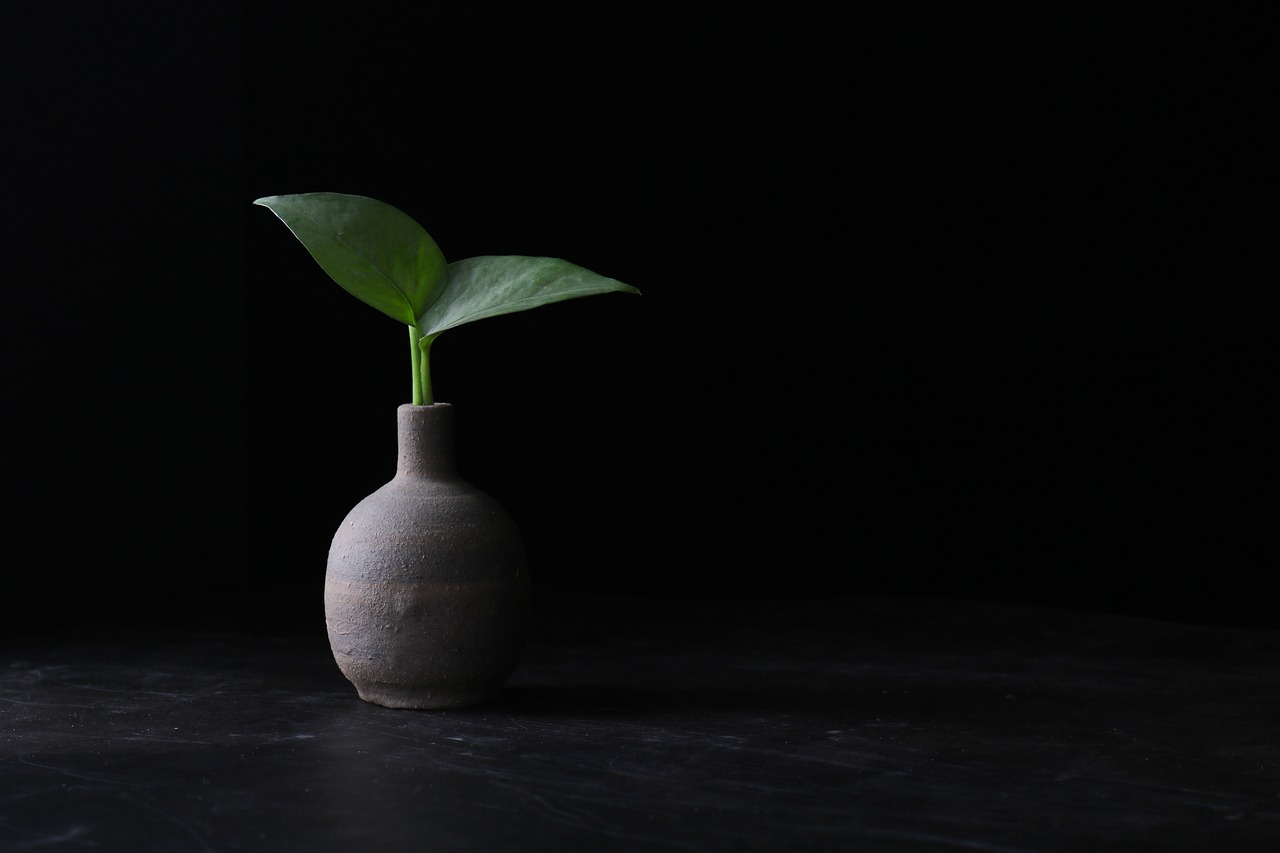
Chinese Porcelain
Chinese porcelain, often referred to as "china," is a stunning testament to the artistry and craftsmanship that has evolved over centuries. Renowned for its elegance and durability, this exquisite ceramic has captivated collectors, artists, and enthusiasts around the globe. The history of Chinese porcelain dates back to the Tang Dynasty (618-907 AD), but it truly flourished during the Song Dynasty (960-1279 AD) and reached its zenith in the Ming Dynasty (1368-1644 AD). This period marked a significant turning point in porcelain production, with innovations in techniques and designs that would set the standard for generations to come.
One of the most fascinating aspects of Chinese porcelain is its production process. The raw materials primarily consist of kaolin clay, feldspar, and quartz, which are carefully sourced to ensure the highest quality. The clay is shaped into various forms, often using a potter's wheel, and then fired at extremely high temperatures in a kiln. This firing process not only strengthens the porcelain but also allows for the creation of intricate glazes and decorations. The result is a piece that is not only beautiful but also incredibly resilient, capable of withstanding the test of time.
Throughout history, Chinese porcelain has been characterized by its stunning blue-and-white designs, which became particularly popular during the Ming Dynasty. These designs often feature intricate patterns, landscapes, and scenes from Chinese folklore, showcasing the rich cultural heritage of the region. Additionally, there are various styles of Chinese porcelain, such as:
- Celadon: Known for its jade-like glaze and subtle colors.
- Famille Rose: Recognized for its vibrant colors and intricate patterns.
- Imari: A style that features bold colors and elaborate designs, originally inspired by Japanese aesthetics.
Chinese porcelain's influence extends beyond its borders, impacting ceramic production in countries like Japan, Korea, and even Europe. In fact, the demand for Chinese porcelain during the Ming and Qing Dynasties led to the establishment of trade routes that connected China with the rest of the world. European potters, inspired by the beauty of Chinese porcelain, began to experiment with their own techniques, ultimately leading to the development of porcelain in places like Meissen and Delft.
Today, Chinese porcelain remains a symbol of cultural identity and artistic achievement. It is not just an object of beauty but also a reflection of the values, traditions, and innovations of Chinese society. From traditional pieces that are still crafted using ancient techniques to modern interpretations that push the boundaries of ceramic art, the legacy of Chinese porcelain continues to thrive.
- What is the difference between porcelain and ceramic?
Porcelain is a type of ceramic that is fired at higher temperatures, resulting in a denser, more durable material. It is typically more refined and has a smooth, glass-like finish compared to other ceramics. - How can I tell if a piece of porcelain is authentic?
Authentic porcelain often has a translucent quality when held up to light and produces a clear, ringing sound when tapped. Additionally, genuine pieces may have markings or stamps from the manufacturer. - Is Chinese porcelain still made today?
Yes, Chinese porcelain is still produced today, with both traditional techniques and modern innovations being used by artisans and manufacturers.
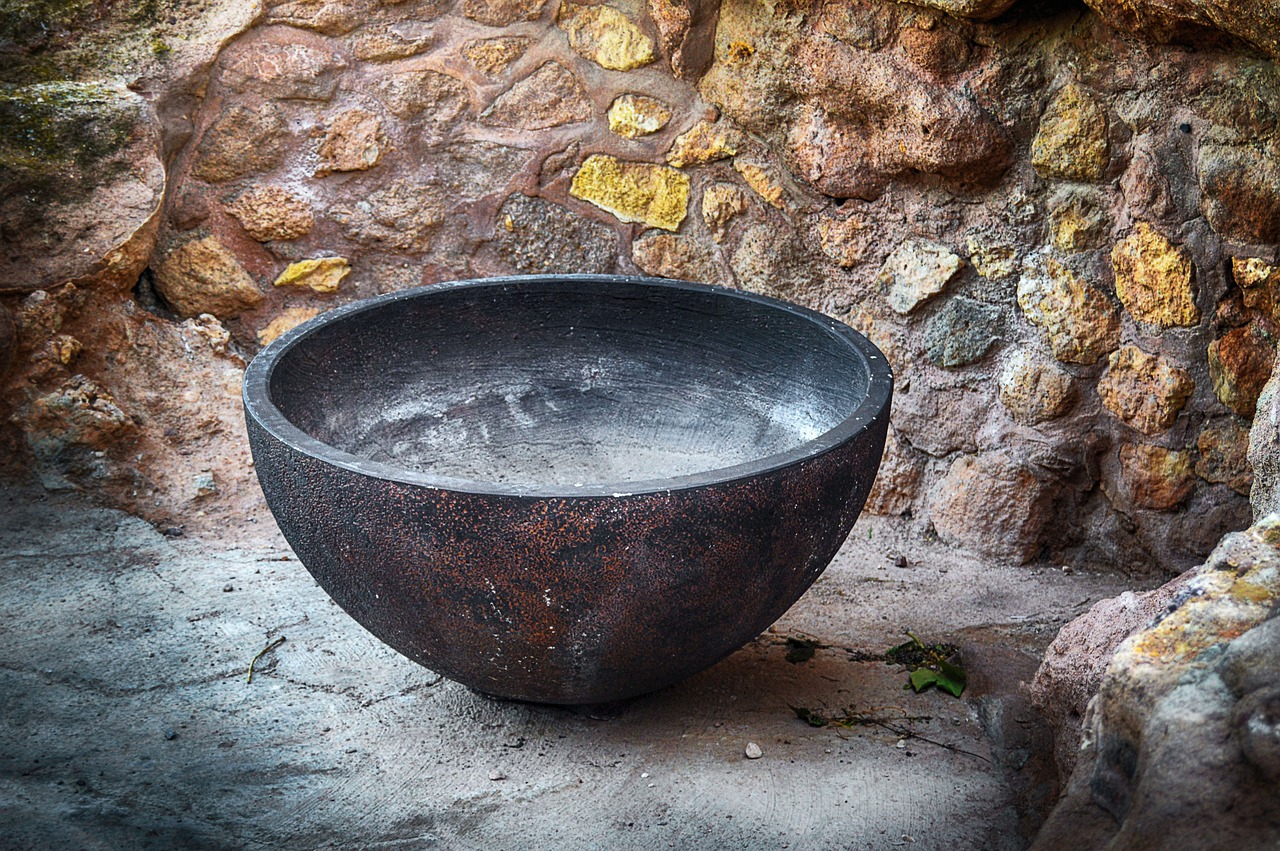
Japanese Raku
Japanese Raku pottery is a fascinating blend of tradition and artistry, renowned for its unique firing process and aesthetic appeal. Originating in the 16th century, Raku was developed in Japan as a way to create tea bowls for the traditional Japanese tea ceremony. The term "Raku" itself means "enjoyment" or "ease," which perfectly encapsulates the spirit of this ceramic style. Unlike other pottery techniques that emphasize uniformity and perfection, Raku embraces the beauty of imperfection, making each piece a one-of-a-kind creation.
The Raku firing process is what truly sets this pottery apart. It involves removing the pottery from the kiln while it is still glowing hot, then placing it into combustible materials such as sawdust or straw. This sudden change in environment creates a reduction atmosphere, which alters the surface of the pottery and produces striking colors and textures. The unpredictability of this process means that no two pieces are ever alike, adding an element of surprise to each creation.
In Raku pottery, the aesthetic is not just about the visual appeal but also about the tactile experience. The glazes used in Raku are often rich in color, ranging from deep blues and greens to vibrant reds and metallic finishes. These glazes are typically applied in thick layers, which can crack and craze during the firing process, further enhancing the unique character of each piece. This emphasis on texture and color reflects the Japanese philosophy of wabi-sabi, which finds beauty in imperfection and transience.
Raku pottery has transcended its original purpose, evolving into a form of artistic expression that resonates with contemporary audiences. Artists today experiment with various forms and techniques, pushing the boundaries of traditional Raku while still honoring its rich heritage. This fusion of old and new not only keeps the tradition alive but also allows for innovation within the craft.
Moreover, Raku pottery is often used in various cultural rituals beyond the tea ceremony. It serves as a medium for personal expression, allowing artists to convey emotions and stories through their work. The connection between the artist and the material is palpable, as each piece is a reflection of the creator's journey and philosophy.
In summary, Japanese Raku pottery is much more than just a craft; it is a living tradition that embodies the essence of Japanese culture and aesthetics. Its unique firing process, emphasis on individuality, and deep-rooted cultural significance make it a captivating subject for both collectors and enthusiasts alike.
- What is Raku pottery? Raku pottery is a traditional Japanese ceramic style known for its unique firing process and artistic appeal, often used in tea ceremonies.
- How is Raku pottery made? Raku pottery is made by removing pieces from a kiln while they are still hot and placing them in combustible materials to create unique surface effects.
- What are the characteristics of Raku pottery? Raku pottery features vibrant colors, varied textures, and a distinct aesthetic that embraces imperfection.
- Can Raku pottery be used for food? While some Raku pottery is safe for food use, many pieces are primarily decorative due to their porous nature and the materials used in glazing.

African Pottery Traditions
African pottery is a vibrant tapestry of culture, history, and artistry, reflecting the diverse traditions and lifestyles of the continent's many communities. With roots that stretch back thousands of years, pottery in Africa is not just about creating functional items; it's a profound expression of identity, spirituality, and social status. Each piece of pottery tells a story, often infused with symbolism that connects the maker to their heritage and beliefs.
In various regions of Africa, pottery serves numerous purposes, from everyday household items to ceremonial artifacts. For instance, in many communities, pots are used for cooking, storage, and even as offerings in religious rituals. The techniques and styles vary widely, influenced by local materials, climate, and cultural practices. For example, the Tuareg people of the Sahara are known for their distinctive black pottery, which is often burnished to a high sheen, while the Zulu artisans of South Africa create colorful, intricate designs that reflect their rich cultural narratives.
One of the most fascinating aspects of African pottery is the use of natural materials. Clay is often sourced locally, and the colors of the pottery can be attributed to the minerals found in the earth. Many artisans still employ traditional techniques passed down through generations, such as coiling and pinching, which not only showcase their skills but also their deep connection to the land. The firing process is equally important, with methods ranging from open firing to more controlled kiln environments, each imparting unique characteristics to the final product.
Moreover, pottery is often a communal activity, with women playing a significant role in its production. In many cultures, the act of making pottery is a social event, bringing together family and friends to share stories and strengthen bonds. This community aspect is essential, as it fosters a sense of belonging and continuity, ensuring that the art of pottery remains alive and relevant.
As we explore the diversity of African pottery traditions, it is essential to recognize the symbolism embedded in these creations. For instance, certain patterns may represent fertility, while others may signify protection or ancestral connections. The use of pottery in rituals, such as weddings or funerals, further highlights its importance in marking life's significant moments. The intricate designs and forms often reflect the spiritual beliefs of the community, making each piece a sacred object.
In recent years, there has been a resurgence of interest in African pottery, both locally and globally. As artists continue to innovate while honoring traditional methods, we see a beautiful fusion of old and new. Contemporary potters are experimenting with shapes, glazes, and firing techniques, creating pieces that appeal to modern aesthetics while still paying homage to their roots. This evolution not only preserves the cultural significance of pottery but also opens up new avenues for expression and creativity.
In conclusion, African pottery traditions are a testament to the continent's rich cultural heritage. They embody the stories, beliefs, and artistic expressions of various communities, making them invaluable not just as art forms but as vital components of cultural identity. As we appreciate these unique creations, let us also recognize the artisans behind them, whose skills and traditions keep this ancient craft alive.
- What materials are commonly used in African pottery?
Common materials include locally sourced clay, natural pigments for coloring, and sometimes organic materials like grass for texture.
- What techniques are used in African pottery?
Traditional techniques include coiling, pinching, and slab building, with firing methods ranging from open fires to kilns.
- How does pottery reflect African culture?
Pottery often features symbolic designs that represent cultural beliefs, social status, and community identity, making it a vital aspect of cultural expression.
- Is African pottery still relevant today?
Yes! Many contemporary artists blend traditional methods with modern aesthetics, ensuring that African pottery continues to evolve and resonate with new audiences.
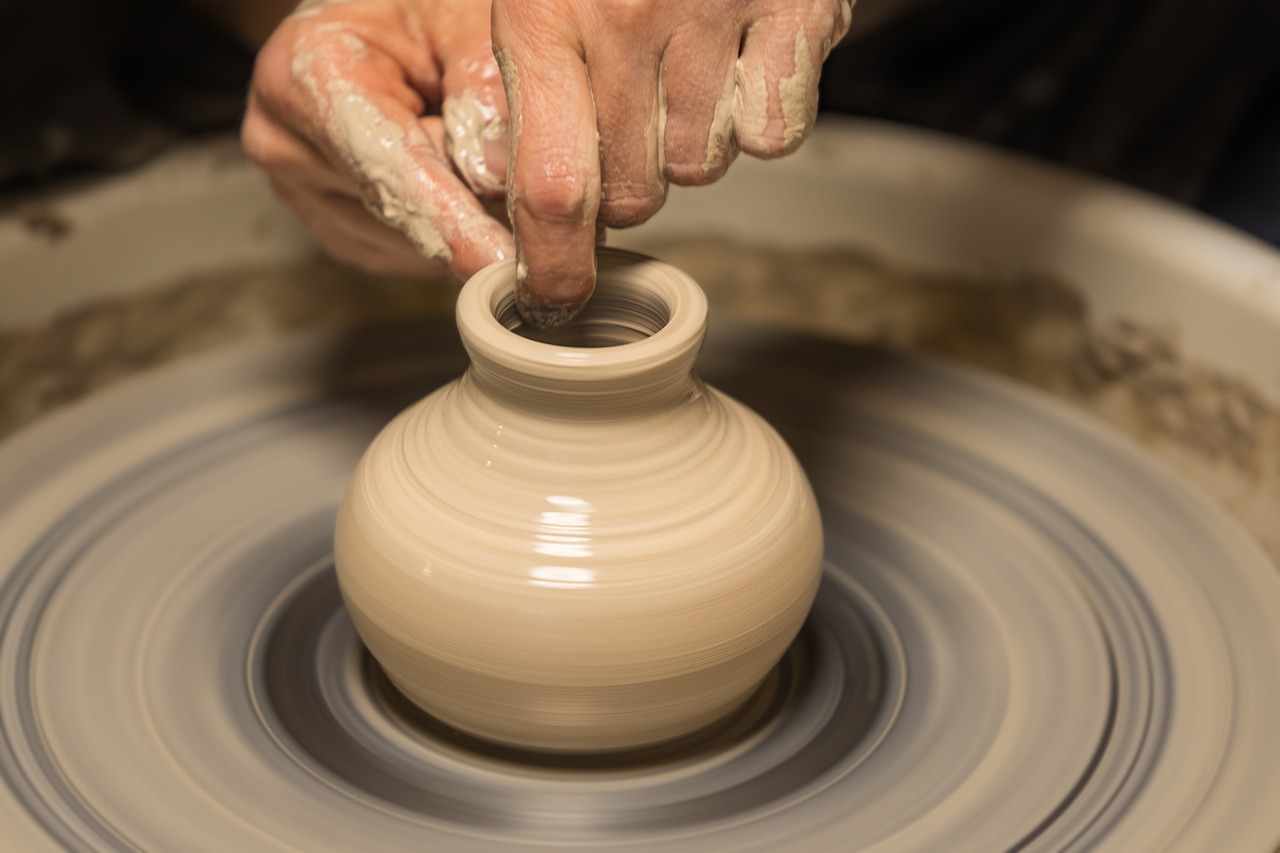
Modern Innovations in Ceramics
In the ever-evolving world of art, ceramics have found themselves at the crossroads of tradition and innovation. Modern potters are not just sticking to age-old techniques; they're blending these methods with cutting-edge technology to create stunning new forms of ceramic art. This fusion opens up a world of possibilities, allowing artists to explore uncharted territories while still paying homage to their roots. Imagine a potter in a sunlit studio, hands caked in clay, yet surrounded by the hum of a 3D printer. It's a striking contrast that symbolizes the current state of ceramics.
One of the most exciting aspects of modern ceramics is the emphasis on sustainability. As awareness of environmental issues grows, many artists are turning to eco-friendly materials and practices. This shift is not just about using recycled clay or natural glazes; it's about rethinking the entire production process. For instance, some potters are experimenting with locally sourced materials, which not only reduces carbon footprints but also creates a deeper connection to the land. In this way, ceramics become a reflection of the artist's environment, telling stories of place and culture.
Additionally, the integration of technology in ceramics has led to remarkable advancements. 3D printing is revolutionizing how pottery is made, allowing for intricate designs that were previously impossible to achieve by hand. Imagine a delicate vase with complex patterns that seem to defy gravity; this is now a reality thanks to digital design tools. Artists can create prototypes quickly, test their ideas, and bring innovative concepts to life without the traditional constraints of time and labor. It's like having a magic wand that transforms imagination into tangible art!
The potential for customization is another thrilling aspect of modern innovations in ceramics. With digital tools, artists can tailor their creations to meet specific needs or preferences. Want a mug that fits perfectly in your hand? Or a decorative piece that matches your living room decor? The possibilities are endless! This level of personalization not only enhances the customer experience but also fosters a deeper appreciation for the craftsmanship involved.
Moreover, the rise of online platforms has democratized access to ceramic art. Artists can now showcase their work to a global audience, breaking down geographical barriers. This has led to a vibrant community where ideas and techniques are shared freely, fostering a culture of collaboration and innovation. Imagine scrolling through social media and discovering a ceramic artist from halfway around the world, whose work inspires you to try something new in your own practice. It's a beautiful cycle of inspiration that keeps the art form alive and thriving.
In summary, the world of ceramics is undergoing a significant transformation, driven by a blend of tradition, sustainability, and technology. As artists embrace these modern innovations, they are not only redefining what pottery can be but also enriching the cultural tapestry of our world. The future of ceramics is bright, and who knows what stunning creations await us just around the corner?
- What are some eco-friendly materials used in modern ceramics? Many artists are using recycled clay, natural glazes, and locally sourced materials to minimize environmental impact.
- How has technology impacted ceramic art? Technologies like 3D printing enable artists to create intricate designs and prototypes quickly, transforming traditional pottery methods.
- Can ceramics be customized? Yes! Digital design tools allow for personalized creations, enhancing customer satisfaction and appreciation for the art.
- Where can I find modern ceramic art? Many artists showcase their work on online platforms, making it easier than ever to discover unique pieces from around the world.
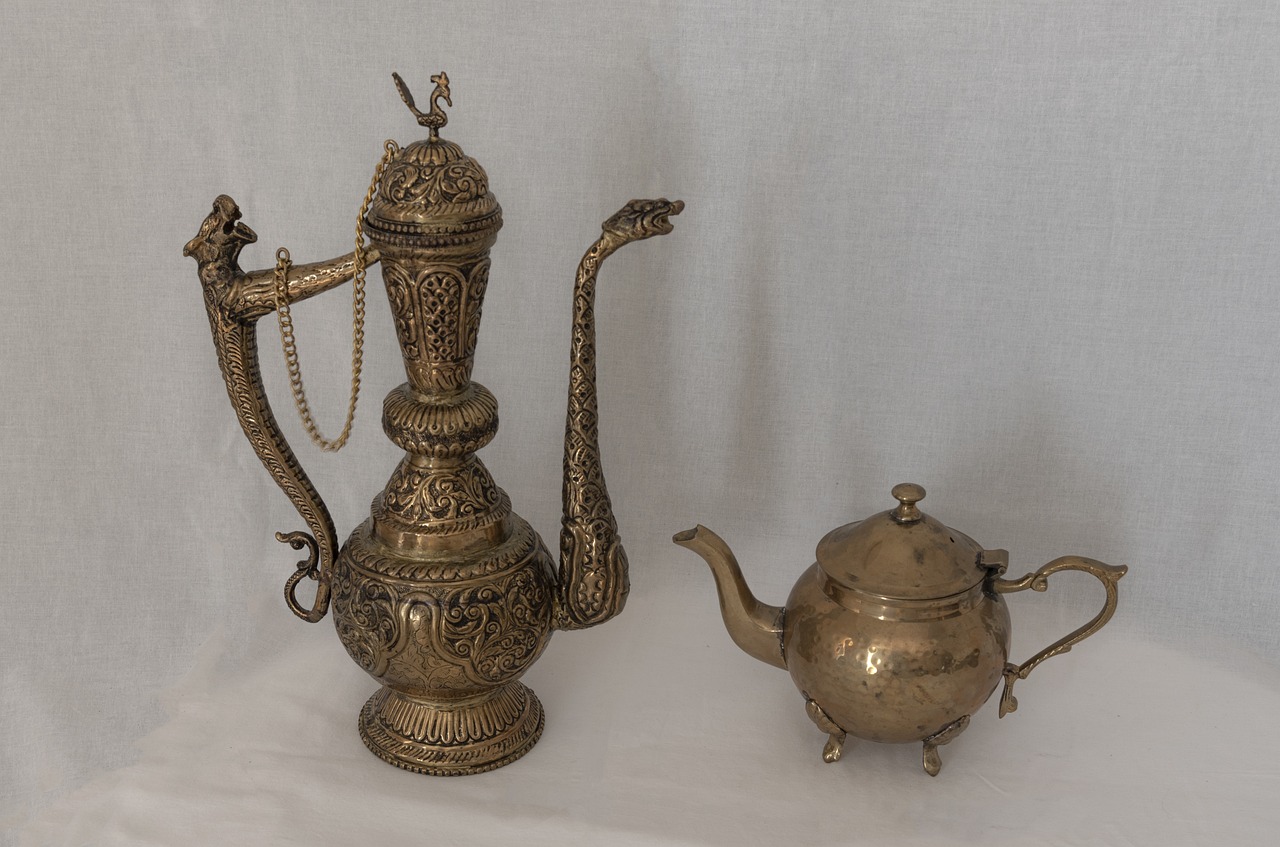
Eco-Friendly Practices
As we navigate through the 21st century, the importance of sustainability has never been more pronounced, especially in the world of ceramics. Artists and potters are increasingly recognizing the need for to minimize their environmental footprint while still creating stunning works of art. This shift isn't just a trend; it's a necessary evolution in the craft that reflects our growing awareness of the planet's health.
One of the primary ways potters are going green is by utilizing natural materials. Traditional clay sources are being complemented or replaced by recycled materials and sustainably sourced components. For instance, some potters are experimenting with clay bodies that incorporate recycled glass, which not only adds unique textures and colors but also reduces waste. This practice not only conserves resources but also gives a second life to materials that would otherwise end up in landfills.
Moreover, the firing process in ceramics is another area where eco-friendly innovations are making waves. Traditional kilns can be energy-intensive, consuming significant amounts of fuel and electricity. However, many modern potters are turning to alternative firing methods that are less harmful to the environment. Techniques such as wood firing and solar kilns harness renewable energy sources. For example, wood-fired kilns can create beautiful, unique glazes while using a natural resource that can be replenished. This not only reduces reliance on fossil fuels but also connects the artist more intimately with the materials they use.
Furthermore, potters are also adopting eco-friendly glazes that are free from harmful chemicals. Many traditional glazes contain lead or other toxic elements that can leach into the environment. In contrast, contemporary artisans are exploring plant-based glazes and mineral alternatives that are safe for both the user and the planet. This not only protects the environment but also ensures that the final products are safe for everyday use, particularly in food and drink ware.
In addition to these practices, the ceramic community is fostering a culture of education and awareness about sustainability. Workshops and seminars are increasingly focusing on the importance of eco-friendly methods, encouraging both seasoned artists and newcomers to embrace these principles. By sharing knowledge and techniques, potters are building a community that values the health of the planet as much as the beauty of their creations.
As we look to the future, the fusion of artistry and environmental consciousness is set to redefine the ceramics landscape. Potters who prioritize sustainability not only contribute to a healthier planet but also inspire others to rethink their practices. The world of ceramics is evolving, and with it comes a new wave of eco-friendly innovations that promise to enrich both our lives and our environment. The journey towards sustainability in ceramics is just beginning, and it’s an exciting time for artists and enthusiasts alike!
- What are eco-friendly ceramics?
Eco-friendly ceramics are pottery pieces made using sustainable materials and processes that minimize environmental impact. - How can I identify sustainable pottery?
Look for labels indicating the use of natural materials, non-toxic glazes, and sustainable production practices. - Why is sustainability important in ceramics?
Sustainability in ceramics helps reduce waste, conserves resources, and protects the environment, making it crucial for future generations. - What are some common eco-friendly materials used in ceramics?
Common materials include recycled clay, plant-based glazes, and sustainably sourced natural clays.
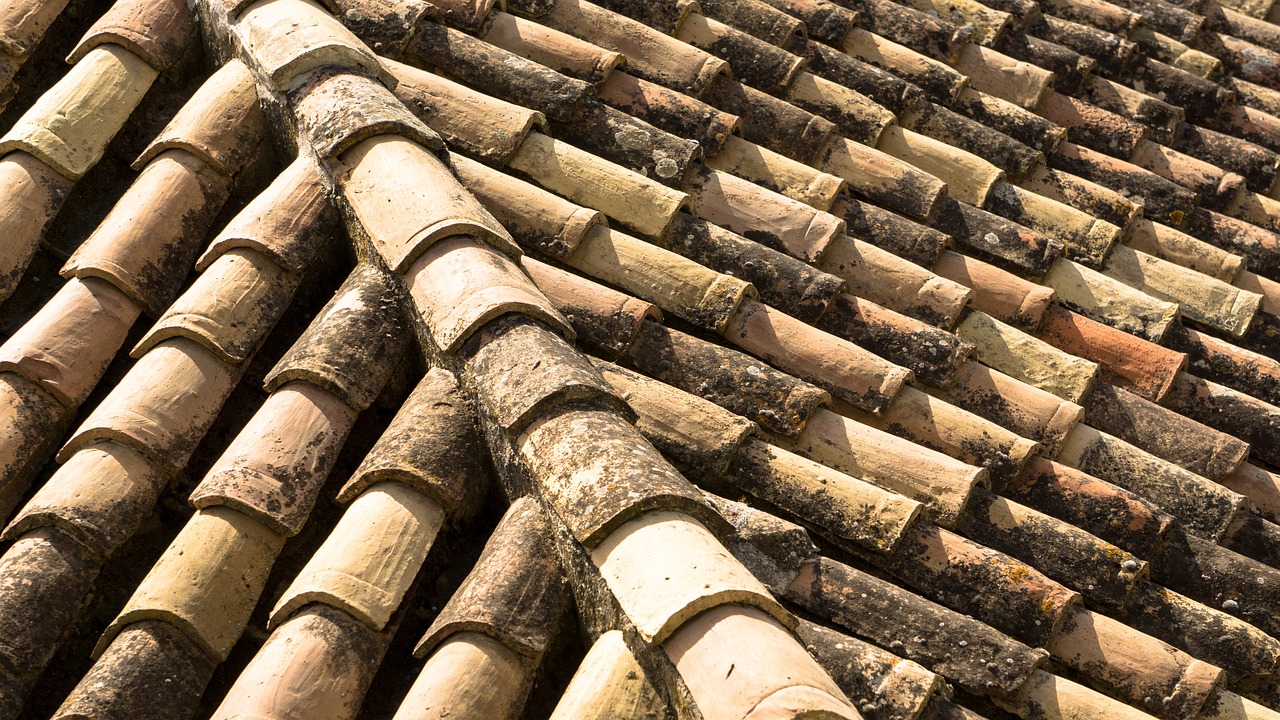
Technological Advances
In the ever-evolving world of ceramics, have revolutionized the way pottery is produced, designed, and appreciated. Gone are the days when artisans relied solely on traditional methods passed down through generations. Today, a blend of innovation and artistry is reshaping the ceramic landscape, making it more accessible and versatile than ever before. One of the most significant breakthroughs is the incorporation of 3D printing technology, which allows artists to create intricate designs that were once deemed impossible using conventional techniques.
3D printing has opened a new realm of possibilities for ceramic artists. They can now experiment with complex geometries and patterns that challenge the limits of traditional pottery. This technology not only enhances creativity but also reduces waste, as artists can produce exactly what they envision without excess material. Furthermore, the precision offered by 3D printing leads to a higher quality of finished products, ensuring that every piece is both functional and aesthetically pleasing.
Another major advancement is the use of digital design software. With tools like CAD (Computer-Aided Design), artists can visualize their creations in a virtual space before they even touch the clay. This means they can tweak designs, experiment with colors, and even simulate different firing processes to predict outcomes. The ability to iterate quickly and efficiently has transformed the design process, allowing artists to push the boundaries of their creativity.
Moreover, the integration of eco-friendly materials into modern ceramic practices is a notable trend. As awareness of environmental issues grows, many potters are seeking sustainable alternatives to traditional materials. This includes using recycled clays, natural pigments, and biodegradable glazes, which not only minimize environmental impact but also cater to a growing market of eco-conscious consumers. These materials often come with their own unique properties, allowing for exciting new textures and finishes that enhance the artistic expression of the pottery.
To further illustrate the impact of these technological advances, consider the following table that summarizes key innovations in the field:
| Technology | Description | Impact on Ceramics |
|---|---|---|
| 3D Printing | A method of creating three-dimensional objects from a digital file. | Allows for intricate designs and reduces material waste. |
| Digital Design Software | Tools that enable artists to create and modify designs digitally. | Enhances creativity and allows for efficient design iterations. |
| Eco-Friendly Materials | Materials that are sustainable and have minimal environmental impact. | Promotes sustainability and caters to eco-conscious consumers. |
As we look to the future, it’s clear that technology will continue to play a pivotal role in the evolution of ceramics. Artists are not just potters anymore; they are innovators, combining age-old techniques with cutting-edge technology to create stunning works of art. This fusion not only preserves traditional practices but also paves the way for a new era of ceramic artistry that is both sustainable and forward-thinking.
- What is 3D printing in ceramics? 3D printing in ceramics refers to the process of using digital designs to create ceramic objects layer by layer, allowing for intricate and complex shapes.
- How has technology changed pottery? Technology has introduced new materials, design software, and production techniques, enabling artists to create more precise and innovative pieces.
- Are eco-friendly ceramics durable? Yes, many eco-friendly ceramics are designed to be just as durable as traditional ceramics, often using sustainable materials that maintain quality.
Frequently Asked Questions
- What are the main types of pottery styles around the world?
Pottery styles vary significantly across different regions, each reflecting its unique cultural heritage. Some of the main types include Chinese porcelain, Japanese Raku, African earthenware, and various European stonewares. Each style has its own techniques and aesthetic qualities that make it special.
- Why is Chinese porcelain considered so valuable?
Chinese porcelain is highly valued for its beauty, durability, and the intricate craftsmanship that goes into its production. Historically, it was a luxury item traded along the Silk Road, and its refined techniques and designs have influenced ceramic art globally.
- What makes Japanese Raku pottery unique?
Japanese Raku pottery is known for its distinctive firing process, where pieces are removed from the kiln while hot and placed in combustible materials. This creates unique textures and colors, making each piece one-of-a-kind. Raku is also deeply tied to Japanese tea ceremonies, adding cultural significance to its aesthetic appeal.
- How does African pottery reflect cultural traditions?
African pottery is often rich in symbolism and is closely linked to cultural rituals and practices. Many pieces serve functional purposes, such as storage and cooking, but they also play vital roles in ceremonies, celebrations, and community gatherings, showcasing the artistry and traditions of various tribes.
- What are some modern innovations in ceramics?
Modern ceramics have seen a blend of traditional techniques with contemporary aesthetics. Innovations like 3D printing and digital design are reshaping pottery production, allowing artists to experiment with forms and designs that were previously unimaginable. Additionally, eco-friendly practices are becoming more prevalent as artists seek sustainable materials and methods.
- How are potters incorporating sustainability into their work?
Sustainability in ceramics involves using eco-friendly materials, such as recycled clay and non-toxic glazes, as well as adopting energy-efficient firing methods. Many modern potters are committed to reducing their environmental impact, making conscious choices that reflect their values and the growing demand for sustainable practices.
- What role does technology play in the future of ceramics?
Technology is revolutionizing the ceramic industry, with advancements like 3D printing enabling artists to create intricate designs with precision. Digital tools allow for greater experimentation and customization, pushing the boundaries of traditional pottery and opening up new possibilities for artistic expression.



















